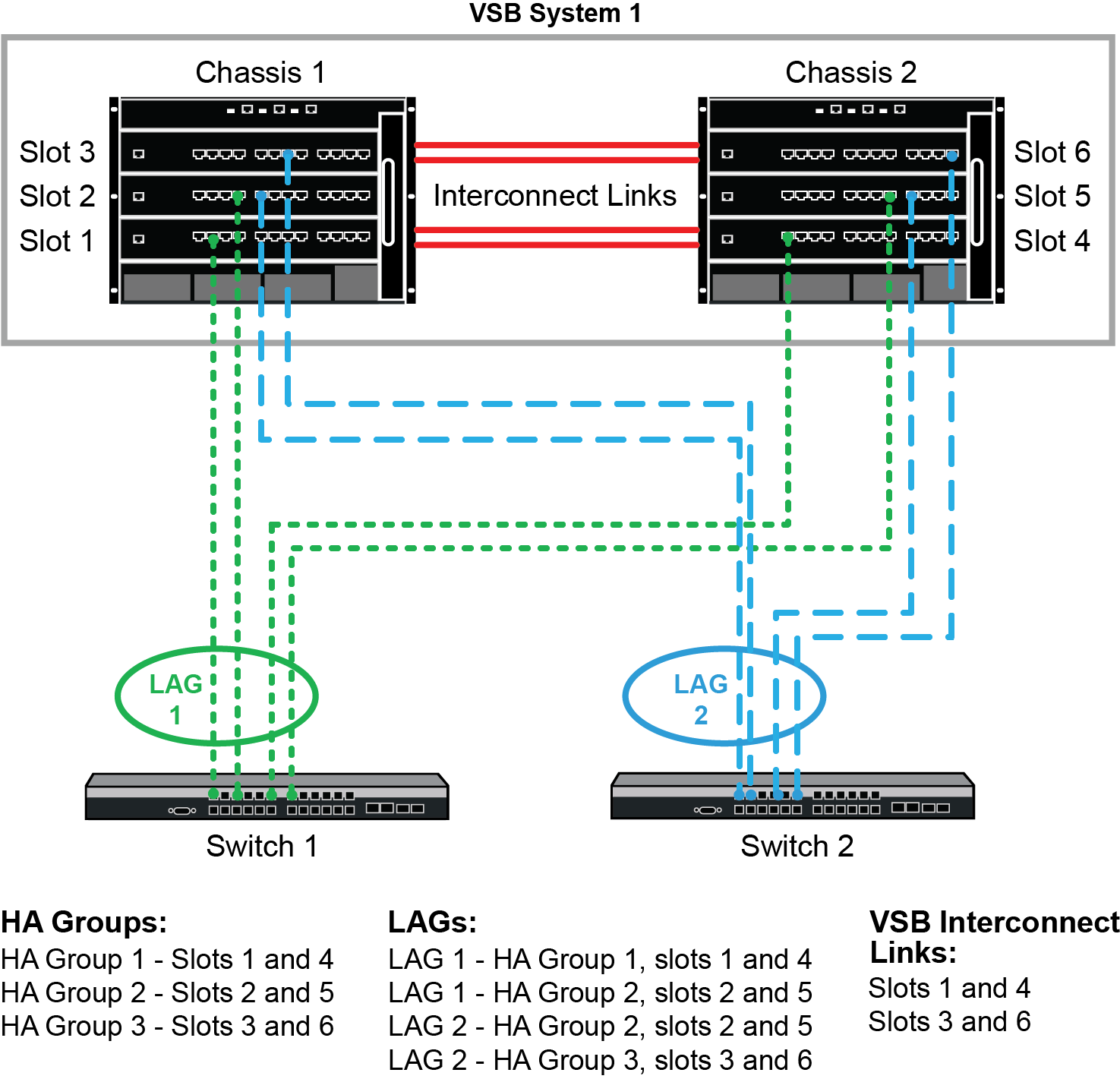There are two restrictions when performing a high availability upgrade to a VSB system:
There is an exception to these two restrictions. If a single HAU group is configured per chassis and all chassis slots are members of that HAU group, these restrictions do not apply. All other HAU preconditions apply, the same as they would in an non-VSB system. See High Availability Upgrade Preconditions for details.
Just as in a non-VSB chassis, high availability upgrade takes place one HAU group at a time. By default, each module in a system is in its own group. For example, a VSB system of two S3 chassis (see VSB System High Availability Firmware Upgrade) would have six HA groups (groups 1—6) by default. As a general rule, in a non-VSB system, the default HAU group configuration should not pose any problems. In a VSB system, updating interconnected modules one at a time, though supported, is not efficient because the interconnect link will be down for two upgrade sessions instead of one. This issue can be avoided by assigning both VSB interconnect link slots to the same HAU group.

Note
It is recommended that you configure a VSB system for high availability upgrade after the VSB system has been globally enabled. You are not prevented from configuring HAU groups prior to globally enabling VSB, but you can not configure slots from both chassis in the same HAU group prior to globally enabling VSB. When VSB interconnected slots are not in the same group, the down time for interconnect links is doubled.The following figure displays an example S3 based VSB HA firmware upgrade configuration.

We address the restriction that an interconnect link must be up between two non-upgrading modules by assuring that interconnect links are assigned to multiple HAU groups. As each group is upgraded, an active interconnect link remains available. By assuring that the two configured LAGs are distributed between multiple groups in both chassis, traffic continues to be forwarded during the upgrade process.

 Print
this page
Print
this page Email this topic
Email this topic Feedback
Feedback